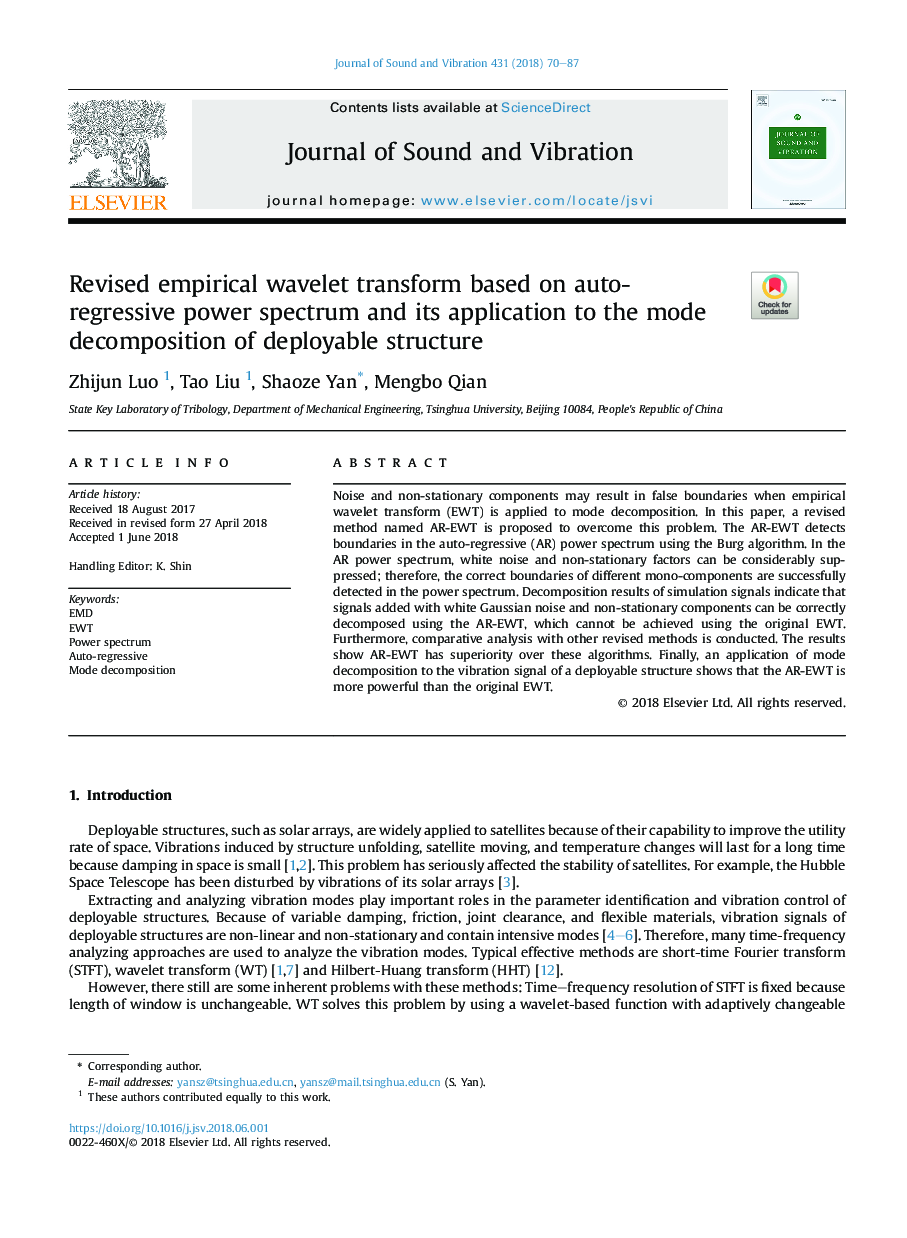| Article ID | Journal | Published Year | Pages | File Type |
|---|---|---|---|---|
| 6752878 | Journal of Sound and Vibration | 2018 | 18 Pages |
Abstract
Noise and non-stationary components may result in false boundaries when empirical wavelet transform (EWT) is applied to mode decomposition. In this paper, a revised method named AR-EWT is proposed to overcome this problem. The AR-EWT detects boundaries in the auto-regressive (AR) power spectrum using the Burg algorithm. In the AR power spectrum, white noise and non-stationary factors can be considerably suppressed; therefore, the correct boundaries of different mono-components are successfully detected in the power spectrum. Decomposition results of simulation signals indicate that signals added with white Gaussian noise and non-stationary components can be correctly decomposed using the AR-EWT, which cannot be achieved using the original EWT. Furthermore, comparative analysis with other revised methods is conducted. The results show AR-EWT has superiority over these algorithms. Finally, an application of mode decomposition to the vibration signal of a deployable structure shows that the AR-EWT is more powerful than the original EWT.
Related Topics
Physical Sciences and Engineering
Engineering
Civil and Structural Engineering
Authors
Zhijun Luo, Tao Liu, Shaoze Yan, Mengbo Qian,
